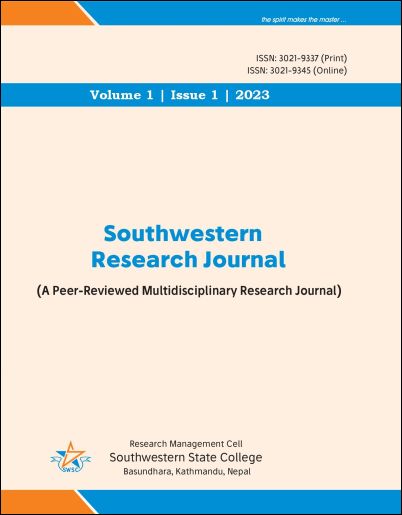Techniques Adopted in Literary Translation of Prose: A Study of “Palpasa Café” from the Perspective of Equivalence Relation
DOI:
https://doi.org/10.3126/srj.v1i1.62262Keywords:
Equivalence, recognition, prose translation, source language, target language, word gapAbstract
Purpose: This study aims to see the ‘equivalence relation’ between the source text and the target text in relation to ‘paragraph equivalence’ while translating a prose text from the source language into target language.
Methodology: The methodology of this study is document analysis. The texts are translated from Nepali into English. Nepali language is known as source language and English language is known as target language in this study. The words and sentences are counted and the difference is found in terms of percentage of the selected paragraphs; Nepali as source language and English as the target language.
Originality: This study maintains originality as a text of translation requires originality in the field of syntactic, semantic, stylistic and pragmatic aspects.
Practical Implications: This study has practical value because the work of translation transfers languages, among people as well as culture and civilization. In reality, translation has played such type of role that people have the idea of knowledge and civilization through translation.
Limitations: This research work is limited to the technique of translation from Nepali into English to show equivalence relation. The texts used are from the Narayan Wagle’s novel, “Palpasa Café” originally written into Nepali language and its translation into English language by ……?
Findings: The findings of this study show that translation techniques are main sources of education from time immemorial. The ancient Vedic, Greek and Roman civilization, which are as sources of knowledge and education, have spread from place to place through the work of translation, if it had not been so, people would remain in their primitive situation in the field of knowledge. We would not read about Homer, Plato, Kalidas and many other writers today if their works were not translated from their source / native languages into other languages such as English/ Nepali/ Hindi. However, there is no exact one-to-one limitation while translating a text from its source language to another target language.




